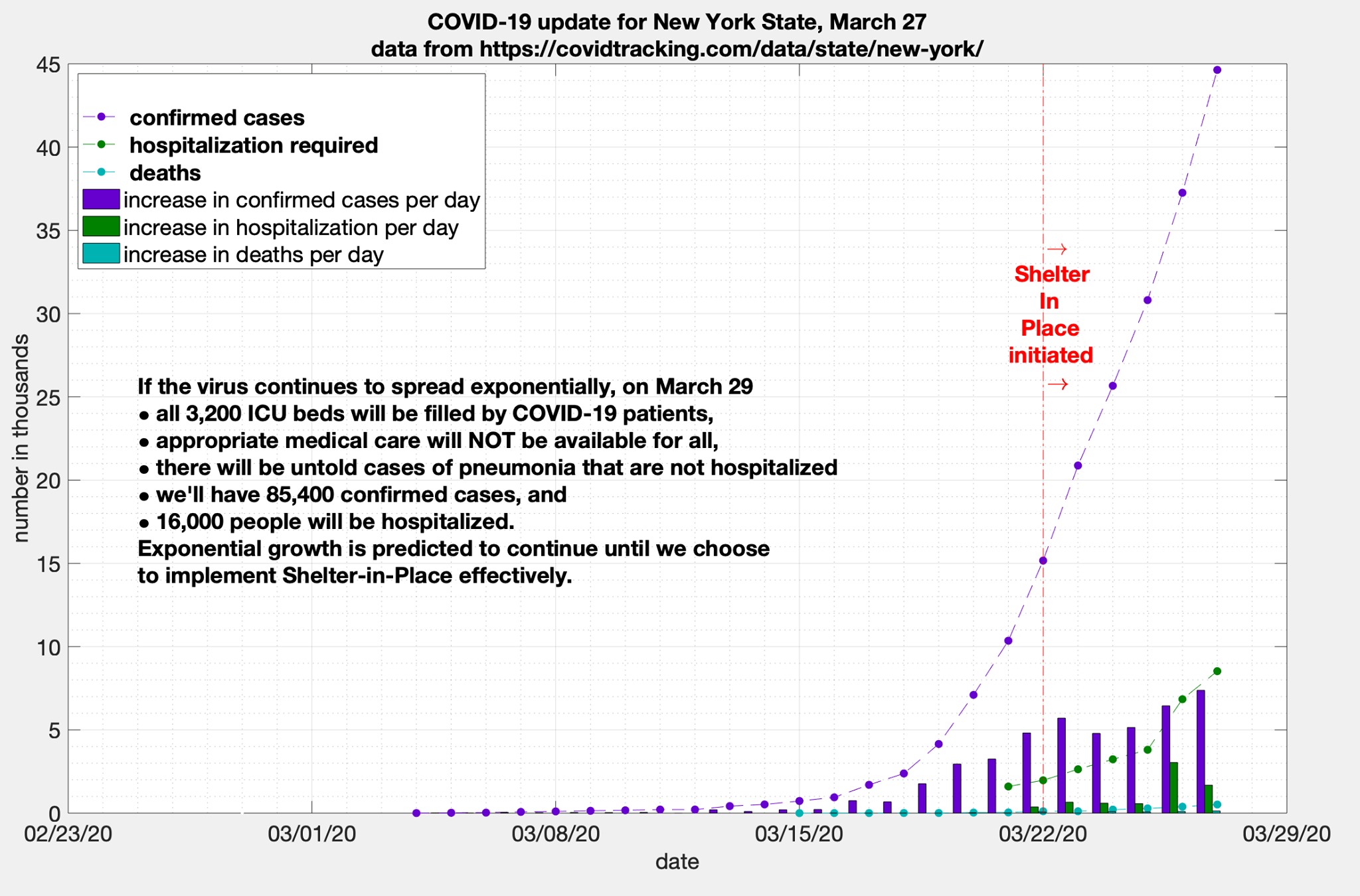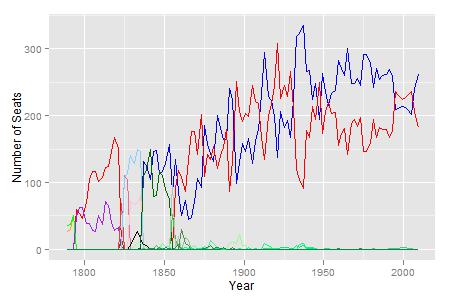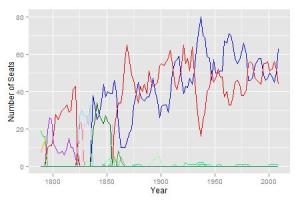By Ella Foster-Molina and Leslie Foster
This is a story of the value of shelter in place. It’s not conclusive yet. As we move through this crisis we’ll gain evidence and update this story.
On March 17, 2020 Santa Clara County had 86 confirmed cases per million residents. New York State had 85 per million. Santa Clara implemented shelter in place that day. New York State waited 5 more days. In that time, they gained an extra 675 infected people per million. Many of those 675 people per million, and all the people they had infected, had been wandering around New York State for 5 days without restriction.
It’s been 11 days since shelter in place was ordered in Santa Clara County. Initial indications from total cases are promising, but are too strongly influenced by testing capacity to be fully reliable. Hospitalizations are a much more reliable number, but it takes approximately 2 weeks to go from infection to hospitalization.* We hope to see an effect starting March 31st for Santa Clara County.
If we have not obeyed shelter-in-place orders well enough, this is what will happen.** Santa Clara County has about 420 ICU beds. If the curve hasn’t bent by April 13, we estimate that all ICU beds will be full and appropriate medical care will no longer be available to the general public. At that point, we expect there to be 2,100 hospitalizations from COVID-19, 260 dead, and untold more asked to stay at home with COVID-19 induced pneumonia that isn’t severe enough to warrant hospital treatment.

New York will suffer more, and can’t hope to see the curve bend in response to shelter-in-place rules before April 4th. Today, March 28, 728 people died in New York. Tomorrow, well before any improvements could have been expected from shelter-in-place, we expect all of the roughly 3,200 existing ICU beds to be filled by COVID-19 patients. In addition, the current trends project 16,000 people will be hospitalized. We hope that shelter-in-place bends the hospitalization in New York State starting April 4th, and that the death rate starts bending April 16th.

The more thoroughly we all
- obey social distancing measures,
- allow close contact only within a safe bubble of trusted household members who solely interact with each other outside of essential activities,
- wash our hands,
- and wear masks,
the more quickly we’ll bend the curve.
If we do it well enough, we’ll have few enough new cases that we can track them and those they may have exposed. If we do it well enough, we could resume a cautious, limited version of our lives without accidentally spreading or catching a deadly virus. If we do it well enough, we can mostly get lives back until our scientists uncover a vaccine.
* The effect on deaths in Santa Clara County should begin April 12, because it takes estimated 25 days from infection to death on average.
**Note that some of the data used (e.g. the number of ICU beds needed) are estimates. The mathematical models are approximations of the actual virus trajectories.






